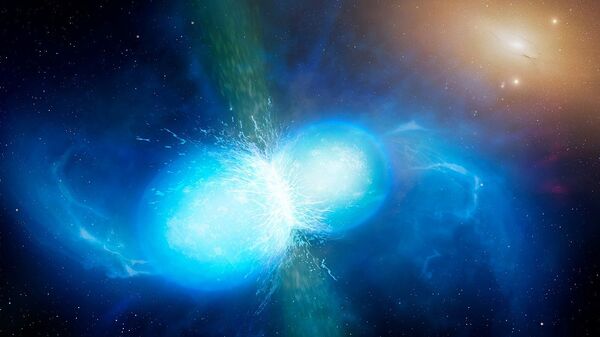A team of researchers at the University of Maryland recently managed to confirm that a peculiar astronomical event they observed a few years ago was apparently a kilonova – a massive explosion caused by a collision of two neutron stars.
According to a statement posted on the university’s College of Computer, Mathematical, and Natural Sciences’ website, astronomers first detected a burst of gamma-rays in the sky back in August 2016, but didn’t realise at the time the full significance of what they had seen.
"The 2016 event was very exciting at first. It was nearby and visible with every major telescope, including NASA’s Hubble Space Telescope. But it didn’t match our predictions—we expected to see the infrared emission become brighter and brighter over several weeks", Eleonora Troja, an associate research scientist in the University of Maryland’s Department of Astronomy, said. "Ten days after the event, barely any signal remained. We were all so disappointed."
However, when in 2017, when the Laser Interferometer Gravitational-wave Observatory (LIGO) recorded the first direct observation of a merger between two neutron stars accompanied by “a turbocharged explosion that instantly forged several hundred planets’ worth of gold and platinum,” the scientists revisited their 2016 data and realised that what they had spotted back then was indeed a kilonova.
"We looked at our old data with new eyes and realised we had indeed caught a kilonova in 2016. It was a nearly perfect match. The infrared data for both events have similar luminosities and exactly the same time scale," Troja noted.
The scientists now intend to use the knowledge they obtained to re-evaluate the events observed in the past and to improve their approach to future observations.
"As we observe more of these events, we may learn that there are many different types of kilonovae all in the same family, as is the case with the many different types of supernovae. It’s so exciting to be shaping our knowledge in real time," Troja added.

